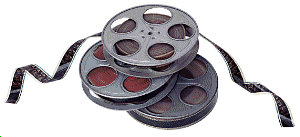|
Hum 3: Film Principles Syllabus | Notes | Examinations | Papers | Bulletin Boards | Grades Motif A "motif" is any significant, repeated element in a film. Almost any visual or aural element can become "motific," provided it plays a significant role in either the film’s narrative or stylistic system. Although visual motifs are quite common and easy to identify, a motif can be almost anything--a recurring melody on the soundtrack, a particular, distinctive camera movement or technique, a prop, a lighting technique, a line of dialogue, even an abstract theme or idea. Motifs serve several important functions within a film’s narrative and stylistic systems.
From John Ford’s The Searchers (1956) Can you spot the motif? What might it "mean"?
From North By Northwest (Hitchcock, 1959) What do these 5 stills have in common?
Here, the motif draws parallels between Roger and Vandamm (each are competing for Eve’s loyalty, affection, and identity).
The motif also communicates Eve’s vulnerability at crucial narrative moments. When her lovers doubt her "true" identity, which she must conceal, they refuse to touch her body. Here the compositional motif evokes classic western-style face-offs and shoot-outs, using blanks, of course! ("She had me pinned down for five minutes before I realized it was that same, silly gun of yours.")
All Rights Reserved 2001 |
|||||||||||||||||||||||||





















